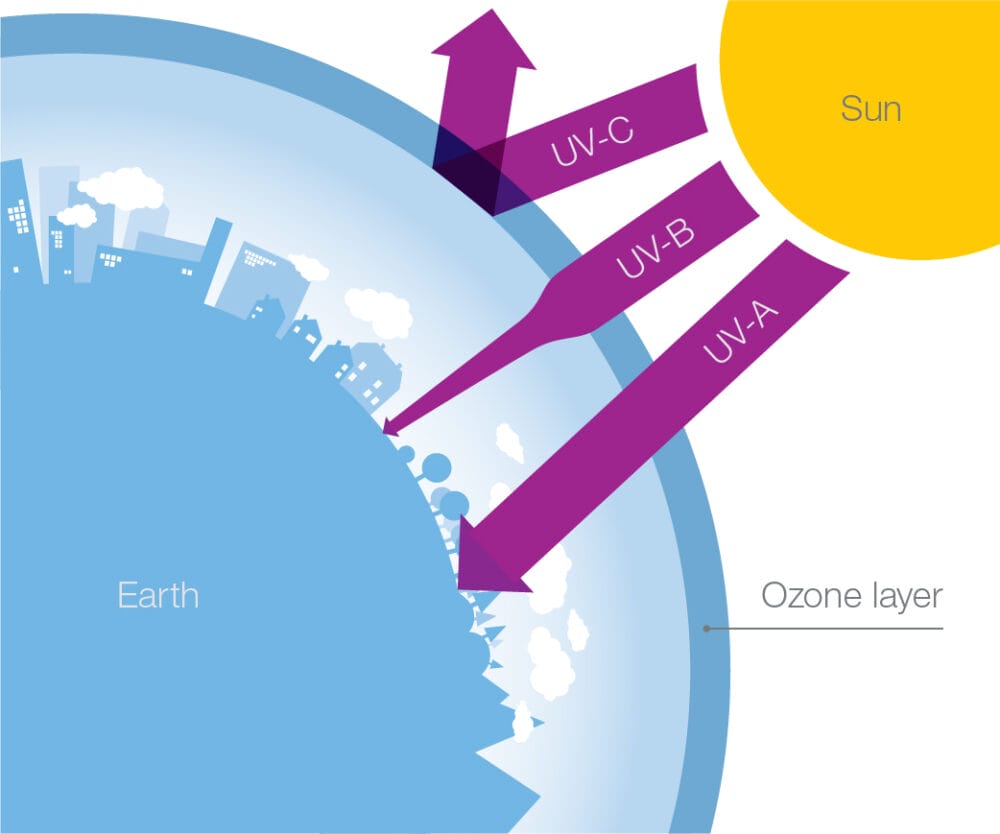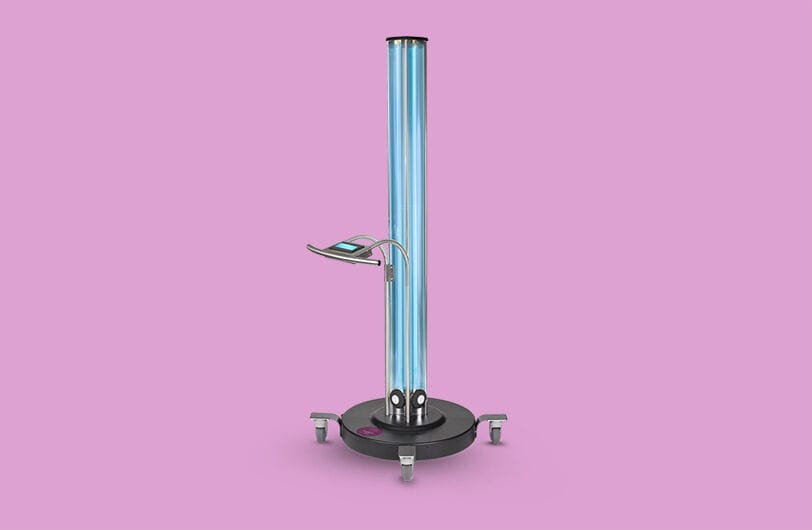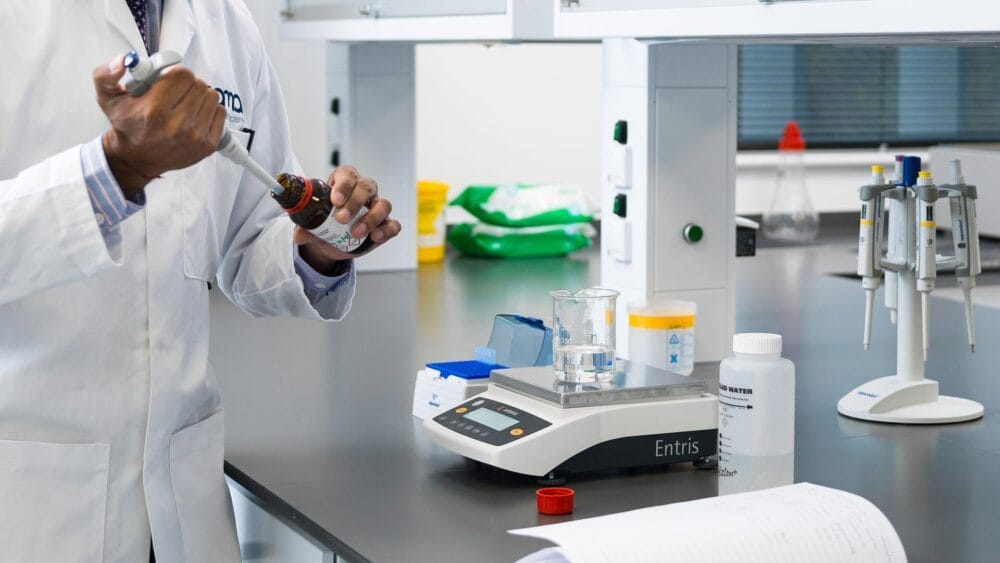Posted
12th May 2020
Research
Hospitals all over the world are deploying UV light systems for the first time. Members of the public living under lockdown are desperately hoping Summer will stop the outbreak. Some hospitals are even using UV in efforts to reuse PPE. But will UV light actually stop the spread of the virus?
To help make sure any UV-C device is being used effectively, we’ve added materials to the COVID-19: resources for healthcaresection of our website.
Does UV light kill coronavirus?
UV disinfection machines are becoming more and more common in hospitals across the globe. Traditionally they’ve been used to help disinfect rooms after they’ve housed a patient with a particularly high-risk infection.
UV light works in a number of ways depending on what it’s acting upon. The most well-observed way it kills microorganisms is by damaging DNA. On a molecular level, UV breaks down the existing bonds in the DNA and causes new ones to form.
If DNA is the basic ‘code’ that allows living things to function and reproduce, the damage from UV light makes that code hard to ‘read.’ When it’s damaged enough, that microorganism can no longer survive or reproduce.

Coronavirus doesn’t actually have DNA (it has a closely related type of genetic code made of ‘RNA’ instead). However, we do know UV light can be effective against coronaviruses. Our own Violet UV-C machineis proven to kill 99.99% of human coronavirus (although it’s important to note it’s not yet tested against the actual COVID-19 strain, SARS-CoV-2, because that strain is not yet available for commercial disinfectant testing).A study published in the American Journal of Infection Controlshowed that introducing the Violet UV-C device in a paediatric care facility reduced the rate of viral infections.
So will Summer stop coronavirus?
It’s probably too soon to tell. We do know that temperature and humidity can affect how long the virus survives on surfaces but there’s currently not enough evidenceto tell if COVID-19 spreads slower in warm climates or warmer seasons. Different countries have had very different responses to how they handle the outbreak, with wildly varying results. That makes comparisons between different countries particularly difficult.
But what about the extra UV light from the Sun?
The Sun emits three types of UV radiation. UV-A, UV-B and UV-C. UV-C is the most potent against microorganisms.

When US researchers compared UV machines that produced primarily UV-C light with ‘pulsed’ systems that produced predominantly UV-A & UV-B, they found that the UV-C machine was significantly more effective.
However, UV-C is normally stopped by the Earth’s ozone layer. If Summer stops the spread of COVID-19, it won’t be due to increased UV-C from the Sun.

A graph showing the relative germicidal activity of various electromagnetic waves. UV-C is highest, with relative germicidal activity peaking at roughly 254nm.
What about these UV machines?
If we want to use UV-C to help fight the COVID-19 pandemic, it’ll be through use of UV-C machines. The BETR-D studyshowed that using UV-C disinfection after a standard terminal clean reduced the number of patients infected or colonised with several different drug-resistant organisms.
Whilst it’s too soon to say whether UV-C will have any effect on the onward transmission of COVID-19, the strength of this evidence is leading hospitals to roll out UV-C machines as part of their infection prevention efforts.
However, not all UV-C machines are created equal.Investigators found our Violet UV-C machine inactivated Clostridium difficile bacterial spores in just 10 minutes of cycle time – compared to 50 minutes when they performed a similar experiment using another device. With the increased demand placed on healthcare facilities during the pandemic, room turnaround time is likely to be an important factor on whether to implement UV-C.
But if UV-C is going to be effective, it needs to be used correctly. An effective manual clean still needs to be performed beforehand. The room needs to be prepared to minimise shadow. The device needs to be placed in the room to maximise coverage.

The biggest challenge with UV-C is shadow. Because UV light moves in straight lines, and doesn’t bounce well off walls, microorganisms in shadow can survive. Minimising shadow and running multiple cycles within the room will mitigate the issue.
Fighting COVID-19 with UV-C.
To help make sure any UV-C device is being used effectively, we’ve added materials to the COVID-19: resources for healthcaresection of our website.
There you’ll find checklists to help structure your UV-C decontamination procedure, printable guides for positioning machines and educational resources to help increase the quality of your manual clean. The materials have been produced with our Violet UV-C machine in mind, but the principles will work for any UV device.
To download our UV-C support pack, along with our other digital resources, please visit the COVID-19: resources for healthcare section of our website.
SHARE THIS ARTICLE
Tags
Latest News
Introducing HEXI HUB: A seamless transition in our product line
We’re pleased to announce an update to our product offering…
Innovative solutions for tackling Carbapenemase-producing Enterobacteriaceae (CPE) at King’s College Hospitals
King’s College Hospital NHS Foundation Trust, one of London’s largest…
Gloves Off: reducing unnecessary plastic waste during environmental cleaning and disinfection
In this blog, Dr Phil Norville discusses the momentum-gaining ‘Gloves…
Gloves Off: Navigating SDS sheets and skin safety claims in environmental decontamination products
In this blog, James Clarke (Head of R&D, Science &…





